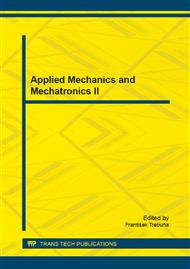[1]
C.C. Bower, C. Lettington, VVER Spent Fuel Storage, VVER Reactor Fuel Performance, Modelling and Experimental Support, Proceedings of an international seminar, St. Constantine, Varna, Bulgaria, (1994) 229-236.
Google Scholar
[2]
V. Ognerubov, A. Kaliatka, V. Vileiniškis, Features of modelling processes in spent fuel pools using various system codes, Annals of Nuclear Energy 72 (2014) 497-506.
DOI: 10.1016/j.anucene.2014.06.021
Google Scholar
[3]
S. Carlos, F. Sanchez-Saez, S. Martorell, Use of TRACE best estimate code to analyze spent fuel storage pools safety, Progress in Nuclear Energy 77 (2014) 224-238.
DOI: 10.1016/j.pnucene.2014.07.008
Google Scholar
[4]
T.C. Hung, V.K. Dhir, B.S. Pei, Y.S. Chen, F.P. Tsai, The development of a three-dimensional transient CFD model for predicting cooling ability of spent fuel pools, Applied Thermal Engineering 50 (2013) 496-504.
DOI: 10.1016/j.applthermaleng.2012.06.042
Google Scholar
[5]
C. Ye, M.G. Zheng, M.L. Wang, R.H. Zhang, Z.Q. Xiong, The design and simulation of a new spent fuel pool passive cooling system, Annals of Nuclear Energy 58 (2013) 124-131.
DOI: 10.1016/j.anucene.2013.03.007
Google Scholar
[6]
Z.Q. Xiong, C. Ye, M.L. Wang, H. Gu, Experimental study on the sub-atmospheric loop heat pipe passive cooling system for spent fuel pool, Progress in Nuclear Energy 79 (2015) 40-47.
DOI: 10.1016/j.pnucene.2014.10.015
Google Scholar
[7]
A. Kaliatka, V. Ognerubov, V. Vileiniškis, Analysis of the processes in spent fuel pools of Ignalina NPP in case of loss of heat removal, Nuclear Engineering and Design 240 (2010) 1073-1082.
DOI: 10.1016/j.nucengdes.2009.12.026
Google Scholar
[8]
L.E. Herranz, J. Penalva, F. Feria, CFD analysis of a cask for spent fuel dry storage: Model fundamentals and sensitivity studies, Annals of Nuclear Energy 76 (2015) 54-62.
DOI: 10.1016/j.anucene.2014.09.032
Google Scholar
[9]
X. Heng, G. Zuying, Z. Zhiwei, A numerical investigation of natural convection heat transfer in horizontal spent-fuel storage cask, Nuclear Engineering and Design 213 (2002) 59-65.
DOI: 10.1016/s0029-5493(01)00454-x
Google Scholar
[10]
F. Trebuňa, F. Šimčák, J. Bocko, M. Pástor, P. Frankovský, P. Šarga, Verification of Safety of Containers for Spent Nuclear Fuel by Thermal and Pressure Tests, Acta Mechanica Slovaca 18 (2014) 26-43.
DOI: 10.21496/ams.2014.029
Google Scholar
[11]
F. Trebuňa, F. Šimčák, R. Huňady, M. Pástor, Z. Bobovský, Modal analysis of transport complex and drop tests of container for transport of spent nuclear fuel, in: EAN 2012 : proceedings of the 50th Annual Conference on Experimental Stress Analysis: Tábor, Czech Republic, (2012).
DOI: 10.21496/ams.2012.028
Google Scholar
[12]
F. Trebuňa, F. Šimčák, J. Bocko, Z. Bobovský, Possibilities of experimental verification of containers for radioactive materials transport, in: EAN 2010: 48th international scientific conference: Velké Losiny, Czech Republic, (2010) 459-466.
Google Scholar
[13]
D. Bodansky, Nuclear Energy-Principles, Practices and Prospects, second ed., Springer, New York, (2005).
Google Scholar


